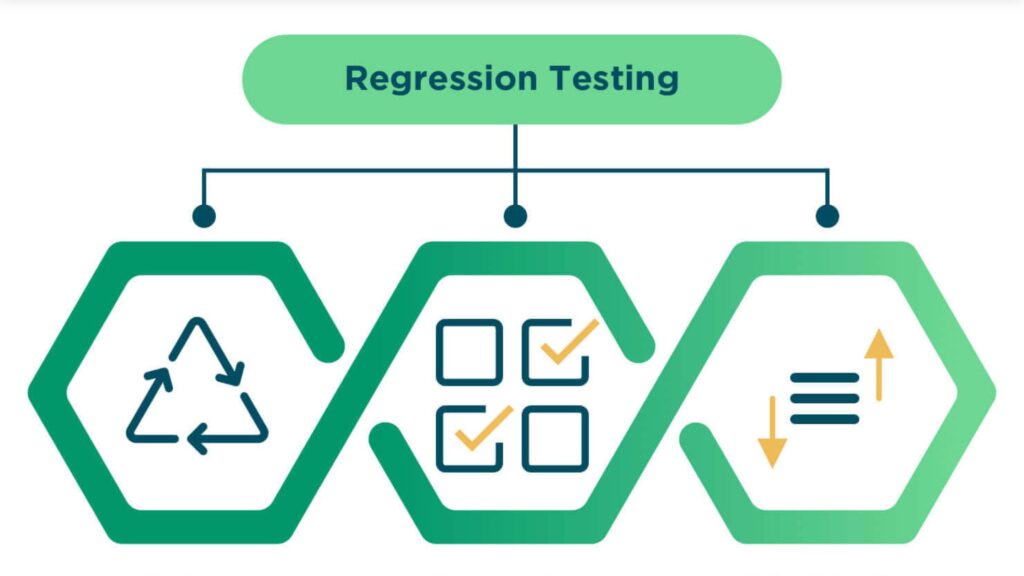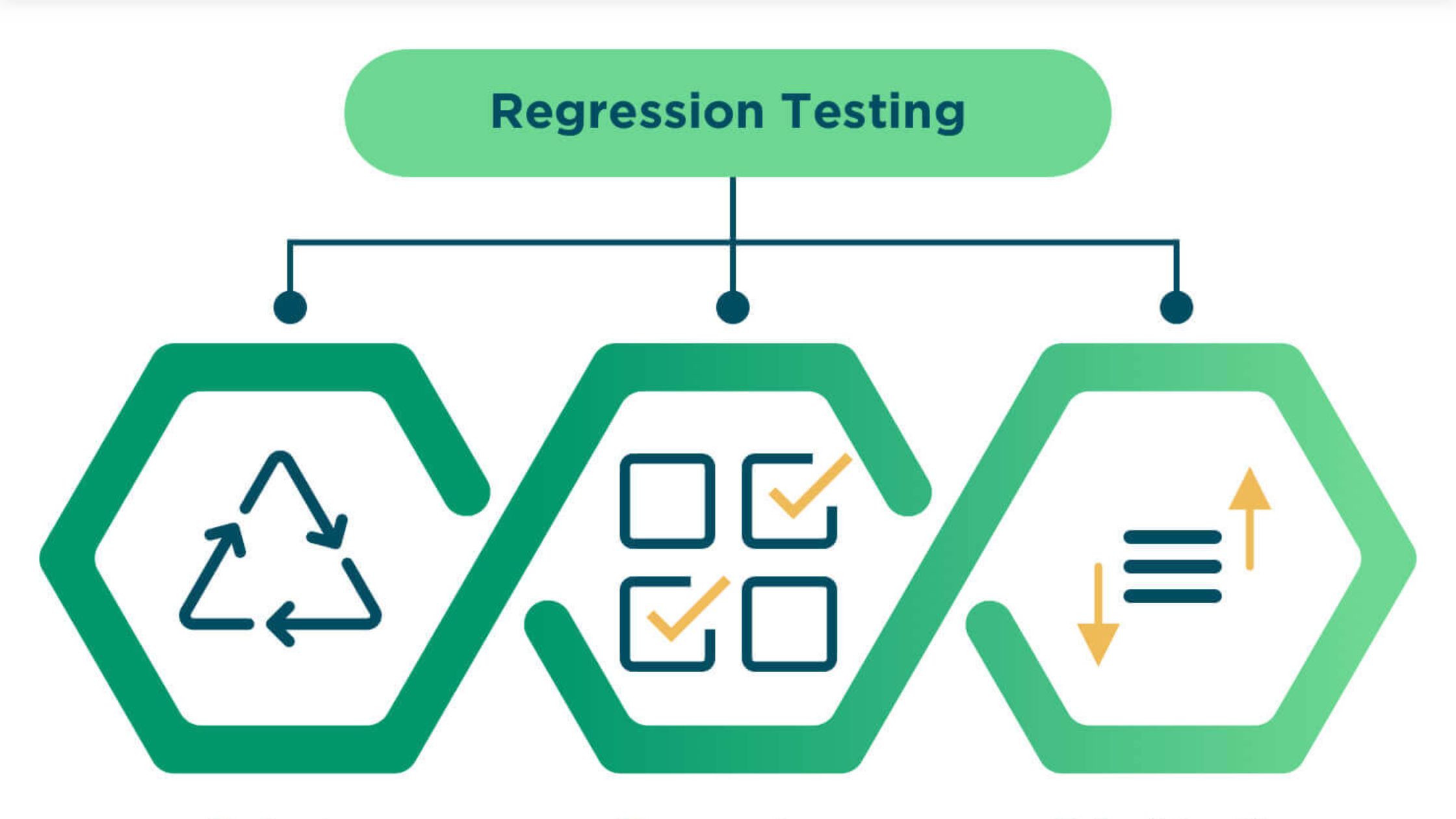What is Regression Testing -A complete tutorial
Building and releasing a fully functional hassle-free application is not easy. It has to go through different types of testing before the final deployment. The app or web testing ensures that the product is working the same way it was intended or designed, it also helps in identifying errors and gaps opposing the actual requirements.

There are different types of testing and based on requirements they can be performed individually or in combinations. Here we will be just focussing on Regression Testing.
If you are planning to learn regression testing fundamentals at the beginner level this article will be a complete guide for you. We will discuss everything starting from what regression testing is, its benefits, why it is needed, how to perform this testing, and much more.
So let’s get started.
Regression Testing
Regression Testing is a testing technique that is done to verify that when a code gets changed, improved, or updated in an application, it does not impact the application’s existing functionality. That means re-executing Previously executed test cases that are impacted by the changes in code.
The main objective of testers to perform Regression Testing is to verify that when a bug is fixed and the newly added functionalities have not created any problem or introduced any defects in the previous working version of the application. It is to verify the modification or update being made in the application is not affecting the existing feature.
Regression tests should be a part of the application development life cycle and must be executed as often as possible. It is the final step, as it verifies the application behaviors as a whole.
The responsibility for the overall stability and functionality of the existing feature of an application relies on Regression testing. Modification in the code may come with dependencies, defects, or malfunctions. Regression testing targets to eliminate these risks, so that after each update the previously developed and tested code remains sustainable and operational under continuous changes. If the application fails to work well after the modification, it is referred to as a regression defect.
For every application testing process, test cases are executed to check the performance. In regression testing as well, test cases are re-executed to check the performance of the older functionalities with the application. Also, the new changes should not result in bugs.
Why Do We Need Regression Testing?
Regression testing is done for two major reasons. Firstly when changes are implemented to fix any bug or defect fail. And secondly, when introducing a new bug or unfixing an old bug.
Regression testing is needed when developers add new code or new features to the application. and the application gets modified by new enhancements like functional, performance, or improved security, changes to existing features, bug fixes, and updates.
There are a number of dependencies in newly added and existing features. So It is a must check whether the new code adheres to the older ones so that the unmodified code is not affected. It is also to know that when one bug is fixed several new bugs may get introduced.
Any Changes made in the application’s source code, demand verification, and for that regression testing is a must. Through this testing, the teams ensured that the modified component of the application functions the same as expected and that the change had not adversely affected the other sections of the application.
Types of Regression Tests
The different types of regression testing are-
Unit Regression Testing-This type of regression testing is done during the unit testing phase. Here the QA engineers review the code as units and verify that all resultant dependencies on the units are blocked out during testing. So that the unit can be tested separately without any error.
Partial Regression testing- This testing is done to confirm that the code works fine when changes have been made in the code. The tested units are then integrated with the actual or unchanged code.
Complete Regression- Complete Regression is done when a change in the code is done on a number of modules and the impact of the change is uncertain on other modules. The application here is tested as a whole to check for any changes because of the change in code.
Progressive Regression Testing- This type of testing is best when there are minor code changes within the application. With these new test cases, testers confirm that no previous functionalities are compromised within the updated code.
Corrective Regression Testing- This testing is done to verify that all the functionality works as designed, even when no new changes are made to the code. Testers can reuse these test cases on all parts of development cycles.
Benefits of Regression Testing
Regression Testing is one of the most used application testing techniques. If implemented correctly the testing team can enjoy its benefits across development cycles. Below are some of its benefits.
- Regression testing identifies bugs created by new code adjustments or additions that create the issue. This encourages improving application quality.
- Provide automation opportunities as many types of regression testing can be automated to enhance the testing process, with greater accuracy and catch bugs shortly.
- Regression testing is compatible with integration testing when new units of functionality are added to the application.
- Integration testing confirms that no errors get introduced and applications all the functionalities work as intended.
- Regression testing verifies that bugs and effects that already get fixed will not occur again.
- Ensures that any change in the code of the application has not affected the already tested code.
- With Regression testing, the users get the application with minimum defects and bugs in it.
Challenges in Regression Testing:
Though there are several benefits, executing regression testing has several challenges as well that a tester may face. Some of the challenges of doing regression testing are:
- This testing has to perform even for a small change in the code because a small change in the code can create issues in the existing functionality.
- In case automation is not used in regression testing, it will be a time-consuming and tedious task to execute successive regression tests.
- Carrying out regression tests, again and again, test suites become relatively large. Due to time and budget limitations the entire regression test suite cannot be executed.
- Determining the reoccurrence of regression tests to fix bugs after every modification or update is another challenge.
- Achieving maximum test coverage while minimizing the test suit is a major challenge.
Selecting Test Cases For Regression Testing
Selecting test cases for regression testing is an essential step. Test cases help the testers to find ways to identify what should be done to the particular application during testing to fix bugs that occurred due to changes in code and maintain its functionality.
Following are some of the important tips you can follow while selecting test cases.
- Focus on test cases that have gone through recent changes or modifications.
- Focussing on those test cases can result in higher chances of finding issues.
- Focus on complex test cases to test the complexity and quality of the application.
- Choose the parts of the application that fail frequently or are more suspected of defects. So, you can choose test cases where the chances of bugs or defects taking place are higher.
- Select test cases that cover modules where changes are made.
- Choose test cases that cover the core functionalities or features of the application.
- Choose the proper test cases that work very well with particular applications and satisfy the organization’s requirements and meet the client’s needs.
How to perform Regression Testing
Now as we have already discussed almost everything about regression testing, it’s time to know how to perform this testing.
Regression testing can be performed by both the methods manually and automated depending on the test cases. However manual method is usually time taking, as applications get piled on with more and more features the scope of regression increases. Thus to make the most of the time and save associated costs, this testing is often automated.
In automated testing, QA testers write test code for the script and use regression testing tools to perform these test cases. Automated testing is best suited for test cases with repetitive tasks as they can be more prone to human error when done manually.
However manual testing is best to perform when there are UI changes and for performing exploratory tests, as they are not supported by automated testing. Also when test cases change frequently regression testing can be done manually and when test cases are fixed then performing automated testing is the best choice.
Here are some important steps to be followed in performing the regression testing successfully.
First is preparing a test suite considering the points mentioned in selecting test cases for regression testing. Next is to automate all the test cases in the test suite, and update the regression suite whenever required. This can be about uncovering new defects found in the test case so that it does not get missed further. Then executing the Regression test cases whenever any changes in the code are made, any bug is fixed, a new feature is added, or any enhancement is done to the existing functionality. And lastly create a test status report that is whether the test case execution has passed or failed.
Regression Testing Techniques
Application maintenance is an activity that requires enhancements, error corrections, optimization, and modification of existing features. Changes that are made to fix errors may cause the application to work incorrectly. Therefore, Regression Testing becomes important to be done. There are various techniques to carry out regression testing. They are as follows
Retest All
In this technique, all the existing test cases in the test suite are re-executed to ensure that all the bugs are detected and resolved. This method requires more time and resources as compared to other techniques.
Regression Test Selection
This method saves time and effort as well as resources as only selected test cases from the test suite are re-executed and not the entire suite. The selection is based on the basis of the modified code and whether the application gets affected by the change or not.
Test Case Prioritization
In this method test cases are prioritized from medium to low priority depending on the criticality of test cases and their impact on the application, failure rate, and also on the frequently used functionality. The ones with higher Priority are executed first. Priority-based test case selection will surely reduce the regression test suite.
Hybrid
This technique is a combination of test Selection and test case Prioritization. Rather than working on the entire test suite, selecting only the test cases which are re-executed depending on their priority is always better to proceed with testing.
Choosing the right tool for Regression Testing
The key to performing smooth and efficient regression testing is choosing the right automation tool. Adding and updating the Regression test is a heavy task. In most cases, it is needed to update automated Regression test cases frequently due to frequent changes in the application.
When selecting an automation testing tool for Regression tests, it is a must to check if the tool allows you to add or update test cases easily.
While researching your options among a number of tools available in the market it is recommended to consider LambdaTest. It is a cloud-based, cross-browser test automation solution that unifies all testing in a single platform. It allows the team to eliminate regressions and enables them to ensure that the applications work the same as they were before introducing any change.
LambdaTest provides an all-in-one test solution for both manual and automated testing for your website, web services, and mobile application. You can automate your regression tests easily and quickly here. This platform support multiple programming languages like Java, Python, Ruby, C#, Javascript, etc.
It offers more than 3000 real devices, browsers, and operating systems with combination versions. LambdaTest is a secure and reliable platform ideal for web and mobile app testing. It offers a set of features used to automate web applications. It can integrate well with other defect tracking tools, executes high scale parallel tests with automated builds, and automatically schedules tests without manual intervention.
Some of the other features it provides are excellent browser interaction capabilities, the ability to design flexible, maintainable automated regression tests, the flexible reporting of defects, with video capture of results, executing multiple scenarios simultaneously with the Smart Scheduling, Execution feature and many more.







